Continuing from Gifu Day 1: The Northern Hida Region
After a well-rested night at the ryokan, we were all charged up for the cycling tour in the picturesque countryside of Hida Furukawa (飛驒古川) fringed by the Japanese Alps. It’s a great way to immerse into the local community and get closer to nature if travellers like us only have so much time to explore the area.
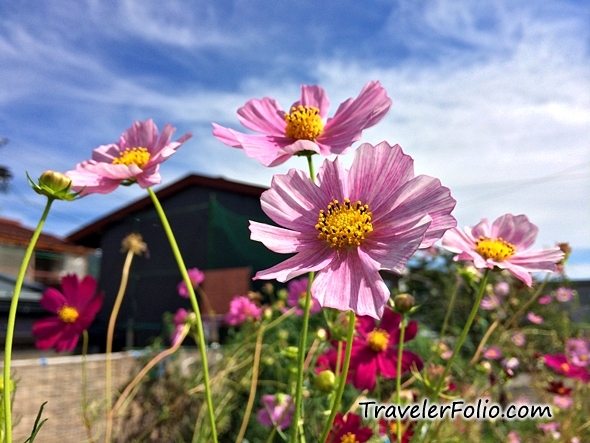
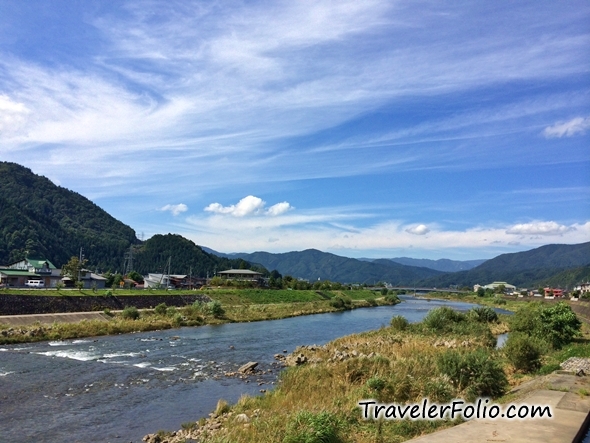
Pretty cosmos in early autumn.
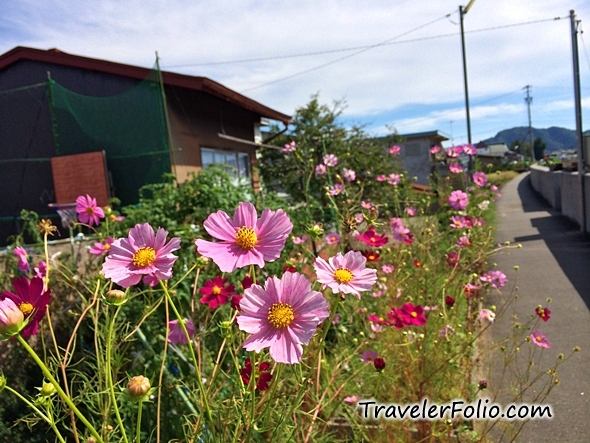
Hida Satoyama Cycling
Hida Satoyama Cycling is ranked as the no. 1 attraction in Takayama (which is just 20-minute train ride away) by TripAdvisor. In fact, the cycling tour is among the top highlights of our Gifu trip.
It’s merely a few minutes walk from Ryori Ryokan Uzuki to the office of Hida Satoyama Cycling where we met our guide Ms. Misa Kono and collected the mountain bikes. Misa briefed on the safety introduction and let us get comfortable with our bikes. Together with four Japanese travellers from other cities, we started the 2.5-hour long cycling tour at 10am with her guidance.
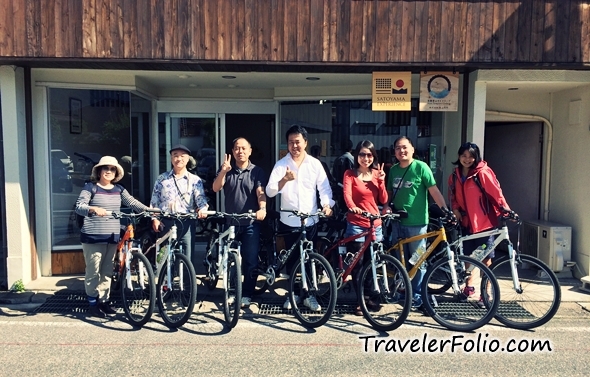
The cycling tour was easy and level riding on pavements for beginners. Firstly, Misa led us around the preserved old town, stopping frequently for us to take photos of the white-walled houses and traditional wooden buildings. Perhaps, the most talk about tourist attraction is the Seto-gawa waterway teeming with huge carps of various colours.
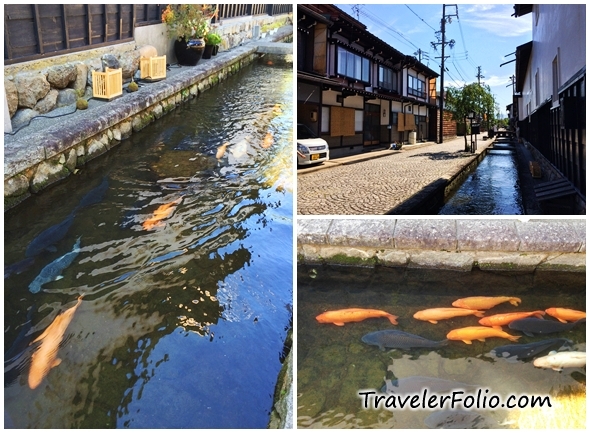
And guess what? There are 1000 carps in Seto-gawa! The carps were released into it decades ago after the contaminated waterway was cleaned up – a reminder that the waterway has to be clean for the carps to live in. During winter, the carps are temporary removed from the waterway and kept elsewhere, so that the waterway can be used to clear snow.

Soon, Misa guided us into the golden paddy fields ready for harvest in autumn. Rows of harvested crops are naturally dried in the sun, so that the taste of the rice is better than it is machine dried.
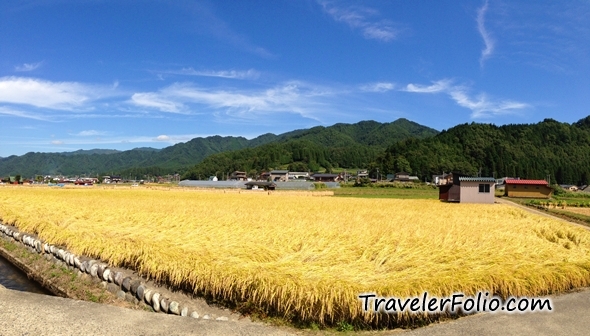
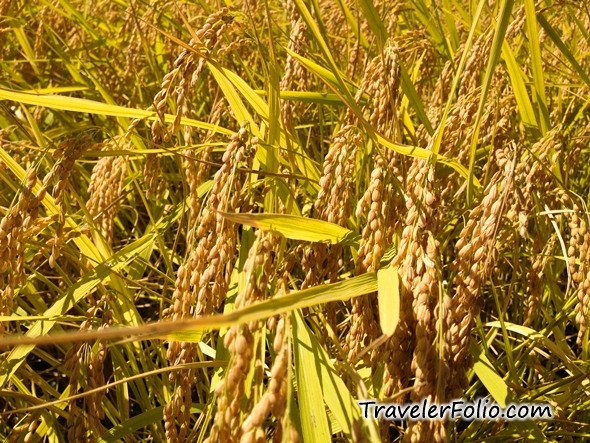
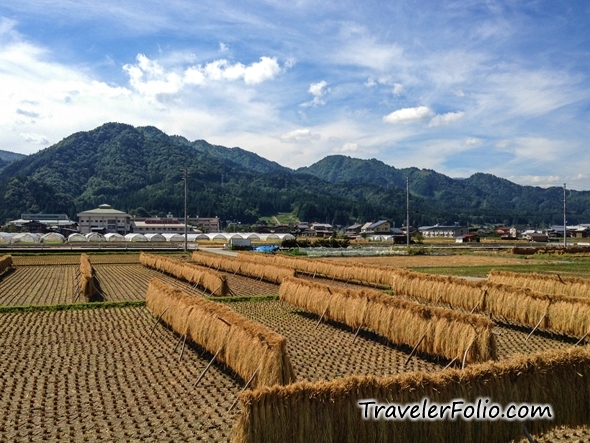
Chee-zee! When in Japan, pose like the Japanese.
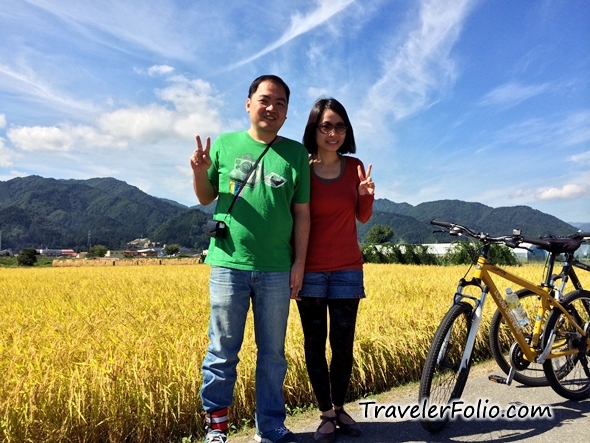
The picturesque countryside is just so photo-worthy.
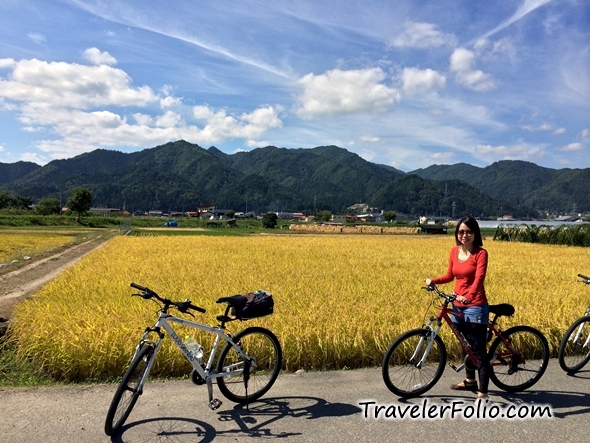
We cycled through the crisp mountain air and greeted by the friendly villagers. Misa seems to know the local folks pretty well so we stopped by and exchanged convo with them. The lady we met told us her friends saw a bear in the mountain when they were plucking wild mushrooms, and that the friends should ring a bell or turn on the radio to warn off the bear. She has not encountered a bear before so she joked that the bear is afraid of her. I think I would freak out if I saw one! But we don’t go into the mountain, so it’s OK. 🙂
Crossing the railway track …

As we past by some village houses, Misa pointed to us that some of the wooden pillars are built by combining two sections of wood without any nails or metal parts. This is an example of high level carpentry skills in Hida region; such techniques allow the wood to be easily replaced or repaired. Also, look out for the cloud-like designs carved under the eaves of the houses. Interestingly, the ‘kumo’ (cloud) design is unique to a chief carpenter, like his signature.
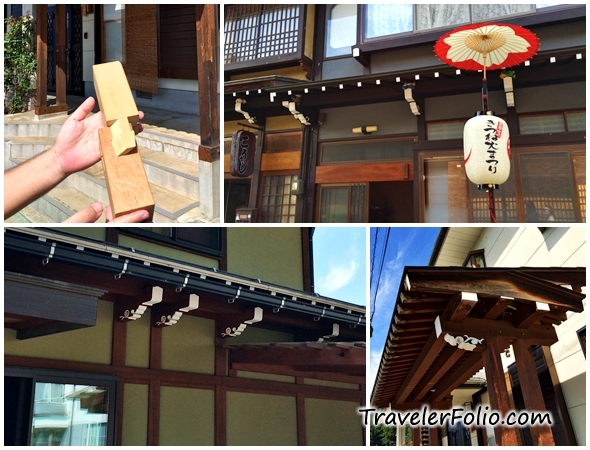
Finally, we had an afternoon tea stop near a small, clear stream we drank from. Misa prepared hot tea and miso biscuits for us to snack on as we chit-chatted while taking in the serenity of the lush surroundings, before heading back to the office of Hida Satoyama Cycling.
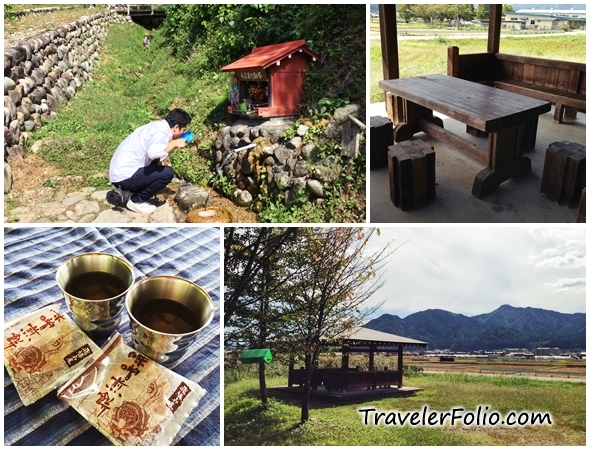
Depending on seasons, Hida Satoyama Cycling runs different bike tours. From 19 October, it’s Hida Apple Cycling Tour! The cycling company does not operate cycle tour in winter and starts from March onwards; however, they still run other programs in winter. Last year, they taught tourists on how to make traditional straw boots that the locals use to walk on snow.
Hida Satoyama Cycling: www.satoyama-cycling.com
Email: reservation@satoyama-cycling.com
Open: 9:00-18:00 / Closed: Thursday
Takayama old quarter
The next leg of the trip was to Takayama. We took a 20-minute JR train ride from Hida Furukawa Station to Takayama Station. The atmosphere is quite different from Hida Furukawa – the old quarter of Takayama is touristy. As soon as we arrived, right in front of Takayama Station is the tourist information centre where travellers from all over the world were picking up brochures and making enquiries.
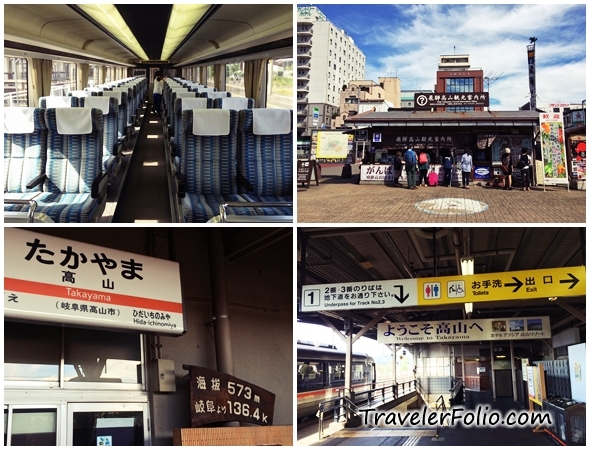
We stored our luggage at the coin lockers at Takayama Station and spent 3-hour in the area for Hida beef lunch, Takayama Jinya and the old town before taking a bus to the Okuhida onsen village to call it a night.
When in Hida, try Hida beef. I usually don’t eat beef as I don’t like the gamey taste (yes, I taste that). But in Japan, wagyu beef is really good – no gamey taste, well-marbled, very tender and succulent even though I had it well-done! For your info, Hida beef is from black-haired cattle breed fattened for over 14 months in Gifu Prefecture.
We had Hida beef everyday in Gifu, prepared in different style – sukiyaki, shabu-shabu and grill. Just a couple of days ago in Singapore, we attended Gifu promotion event for tasting Hida beef, sake and other agricultural products at Ki-sho Japanese fine dining restaurant. I had a taste of raw Hida beef – it’s very soft and melt-in-the-mouth. If you’d like to have some high quality Hida beef in Singapore, it’s available at Ki-sho, located at 29 Scotts Road.
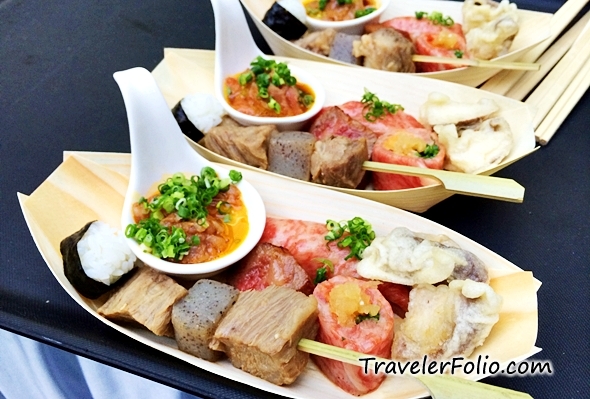
Within 2-minute walk from Takayama Station, we had Hida beef lunch at Ajikura Tengoku which is run by the Central Union of Agricultural Cooperatives of Japan – so you can expect high grade Hida beef serves at the restaurant. Surprisingly, it only costs ¥1660 per person for Grade A5 Hida beef that’s the best grade. Grill the beautifully marbled chunks of meat according to how well you want it done. The grilled beef oozes with juicy goodness and wonderfully rich flavour, it tastes so good on its own.

Address of Ajikura Tengoku: 4-147 Hanasato-machi, Takayama City
Open: 11am-2pm, 5pm-9pm / Closed: Tuesday
Web: www.ajikura.jp
Takayama Jinya truly reflects the architectural style of the governor house dating back to the Edo period with its well-preserved building, the only one of its kind in Japan. Due to the economic importance of Hida area with rich natural resources, the governor house at that time was among the most prominent in Japan. It used to be the home and office of the governor, and for conducting legal trials and sentencing criminals.
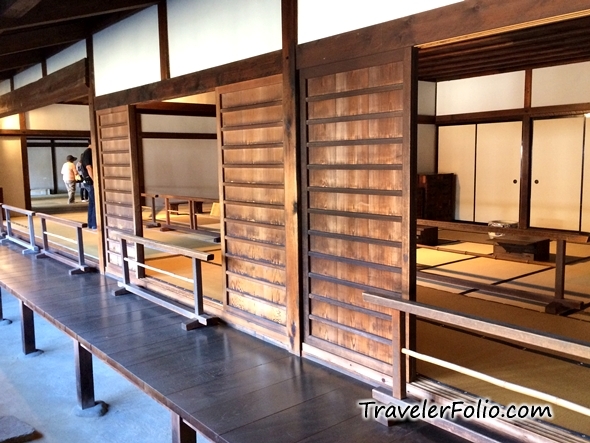
For history buffs, this is the national historic site that tells a lot about the former Japanese society. The interior of Takayama Jinya shows the hierarchical structure that existed – the tatami mats in the servants’ rooms have no decorative fringes; the tatami mats in the rooms of the mid-level subordinates have black fringes; and those in the high ranking officials have colourful fringes.
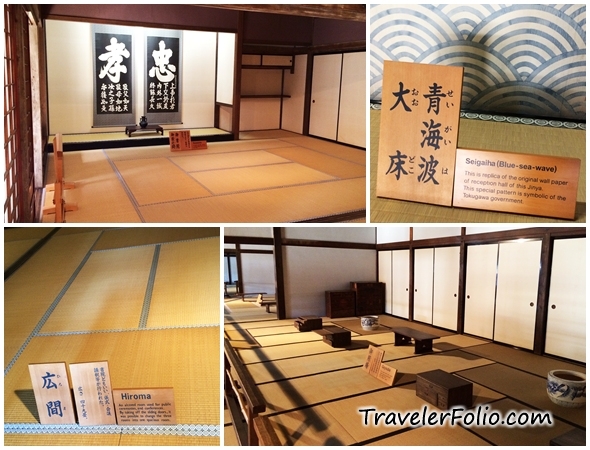
The interrogation room depicts spine-chilling torture methods.
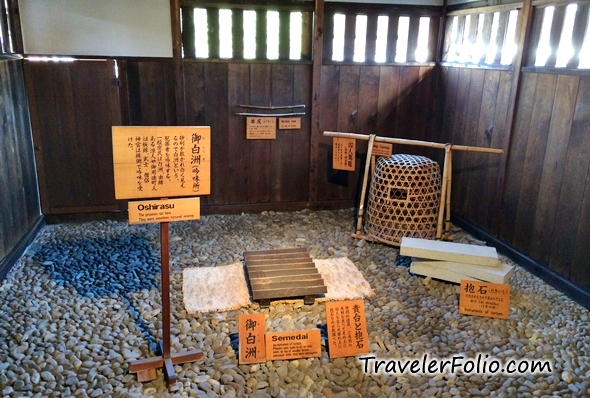
Address of Takayama Jinya: 1-5 Hachiken-machi, Takayama City.
Open: 8:45am – 5pm (Aug until 6pm, Nov – Feb until 4:30pm
Closed: Dec 29, Dec 31 – Jan 1.
Fee: ¥420
Web: www.pref.gifu.lg.jp/english/tourism/takayama
Takayama is dubbed as the ‘Little Kyoto” of Hida. You get a feel of the Edo period it reflects on the well preserved traditional townhouses at the old quarter. Some 400 years back, the city prospered as a trading centre with merchants.
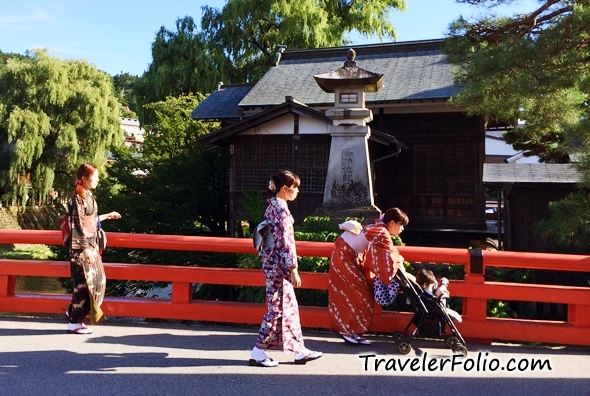
The old quarter is 10-minute walk from Takayama Station. Stroll down the Sanmachi main street flanked by gift shops, cafes, restaurants and sake breweries, some with sugidama balls of cedar hanging from the breweries.
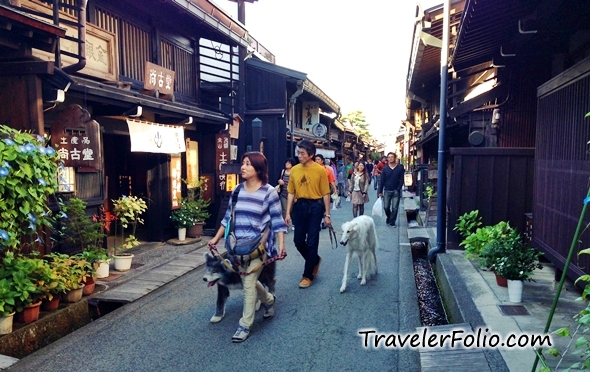
Now, there are only 6 old sake breweries in Takayama as compared to 56 sake breweries during the Edo period in Hida. You can sample some sake at the breweries in the old quarter. Most of the shops in the area open daily from 9am to 5pm.
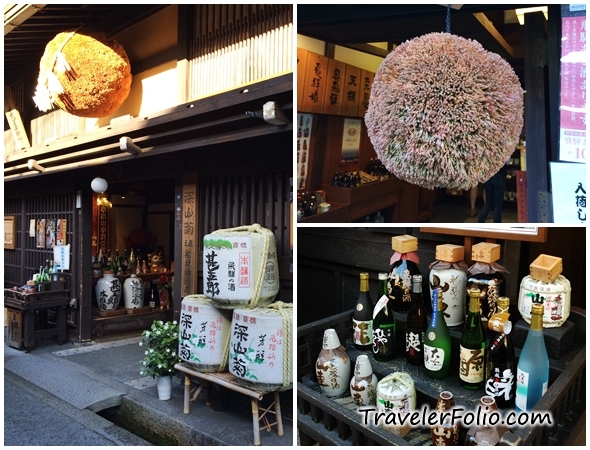
You can even take a rickshaw ride to relive the good ‘ol days!

Try some traditional snacks at the old quarter, such as the hand grilled rice cracker and dango, that’s sticky rice flour ball with a burnt flavour.

Maneki Neko fortune cat in front of a shop.
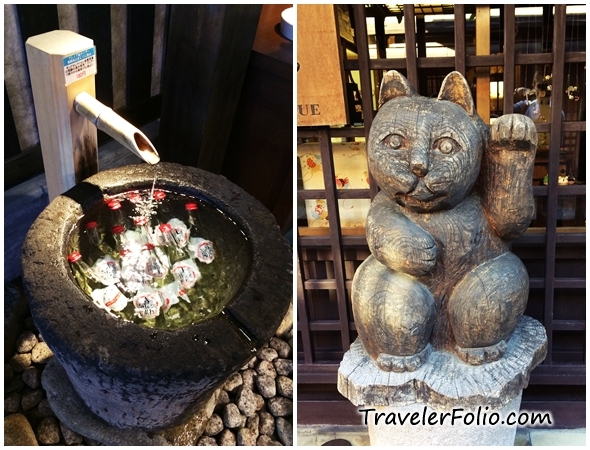
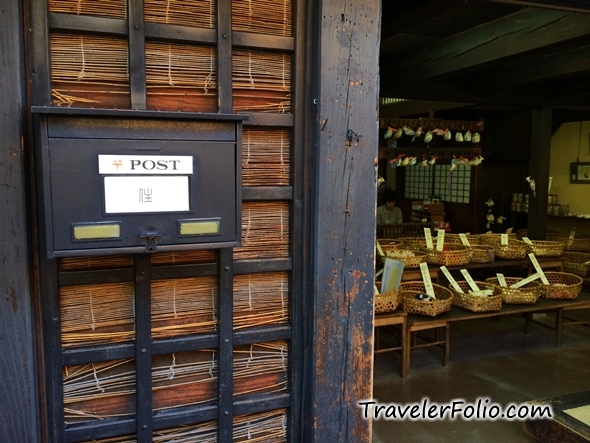
A shop selling a variety of miso and you can sample some.

A popular souvenir to take home from Takayama, Sarubobo is the traditional Hida doll that is a charm for safety and easy child birth.
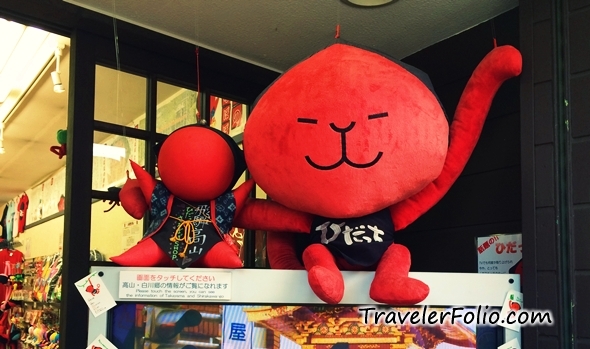
Houses along the river in the old quarter of Takayama.
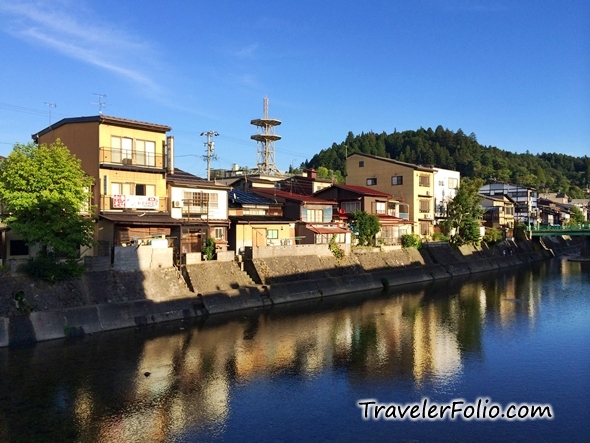
The old quarter is always crowded with tourists from all over the world.
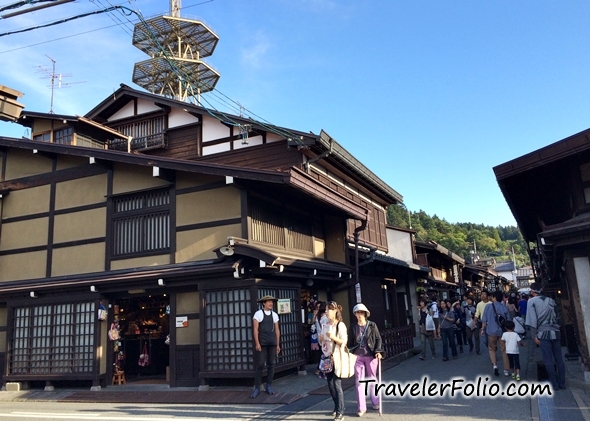
From Takayama Bus Terminal, we boarded the Nohi bus for a 1-hour ride to Shinhirayu Hot Spring, one of the five onsen towns of Okuhida. We put up a night at Nakadaya onsen ryokan. It was cold in the mountain but the cosy ambience and hospitality of the staff warmed us up. Like most ryokan, dinner and breakfast are included.
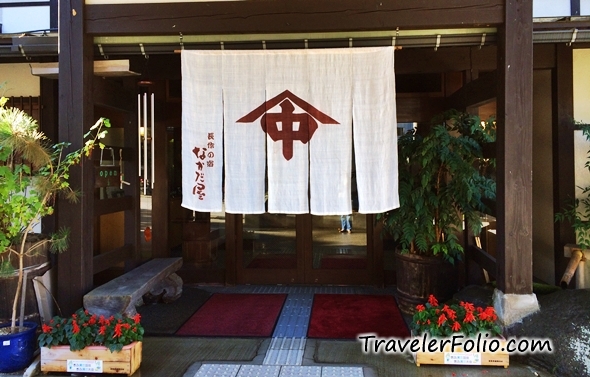
Common areas and a section selling souvenirs at the lobby.
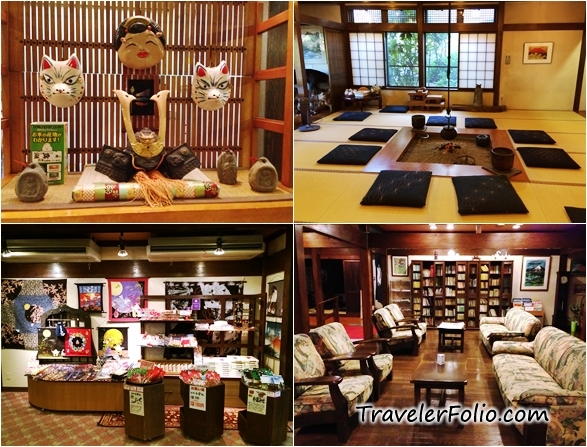
Dinner is served in kaiseki-style, Japanese multi-course consisting of over 10 different kind of dishes such as sashimi, grilled fish, Hida beef, steamed food and hot pot. It was a sumptuous dinner for us, quite an unforgettable one as the food was really fresh and oishi!
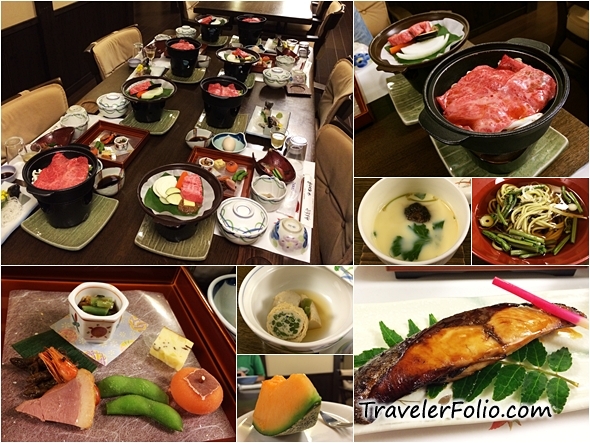
I usually don’t eat sashimi and raw meat, so I had some of it cooked in the delicious sukiyaki hot pot. 😛

And more Hida beef cooked in hot pot! Look at the marbled texture.
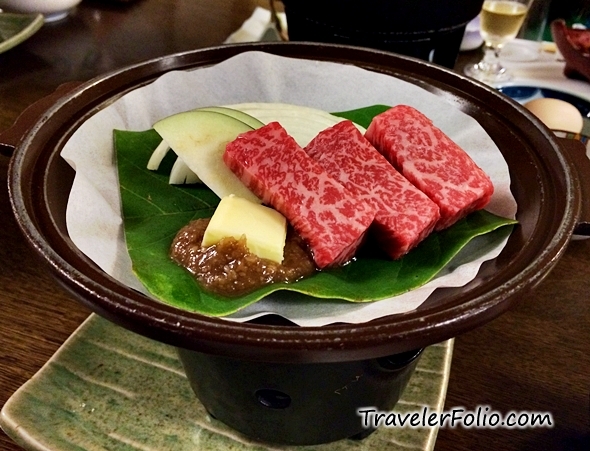
Within a stone’s throw away, there’s a shrine near the ryokan. It happened that some of the village students were rehearsing for the religious ceremony taking place the day after. We popped by after dinner to catch the rehearsal.

It was quite an eye opener for us to watch the local students as young as a few years old practising for the special occasion.
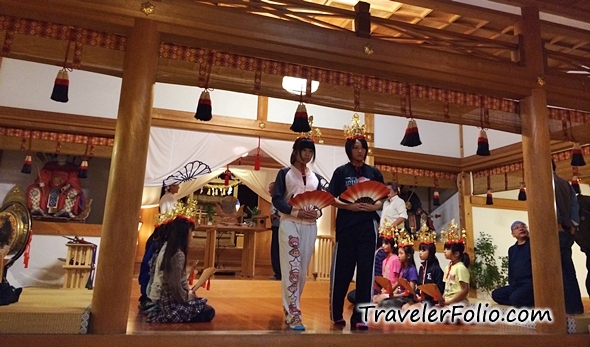
Back to Nakadaya onsen ryokan.
Before calling it a day, we had a soak at the private onsen that comes with both indoor and outdoor pools at the ryokan. It wasn’t too hot and no pungent smell of sulphur (if you can’t take that kind of smell). The experience was sheer relaxation.
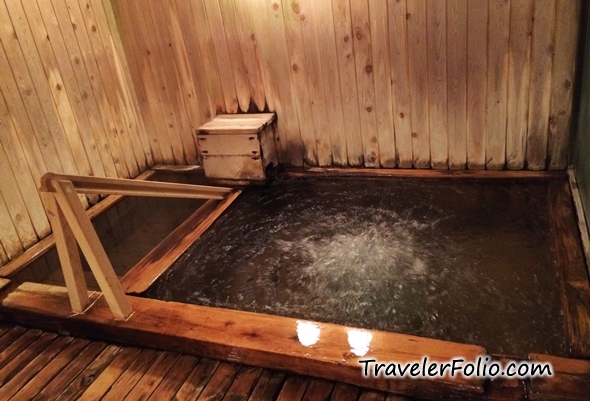
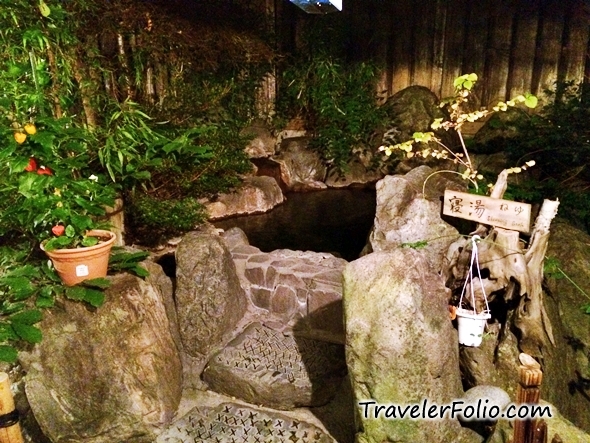
At the ryokan, there are public indoor and outdoor onsen areas separated for male and female guests.
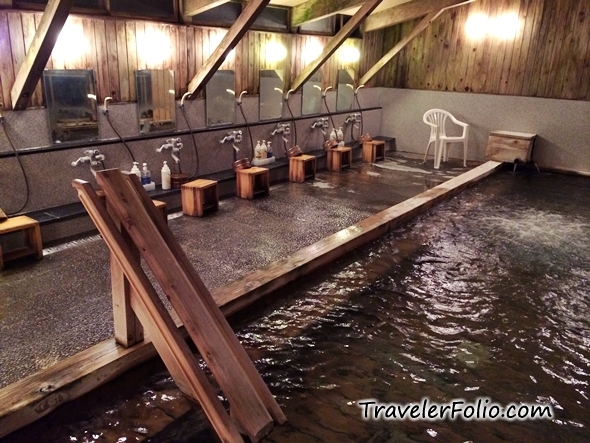
That night, we opted for the western style room, the only one of its type at the onsen ryokan, with both toilet and bathroom attached.
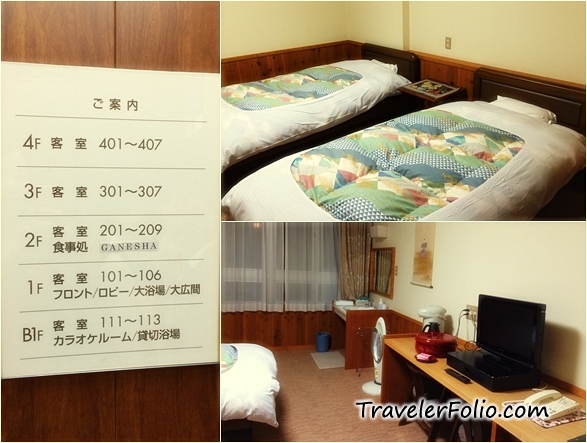
A huge and yummy Japanese breakfast to kick start the day.
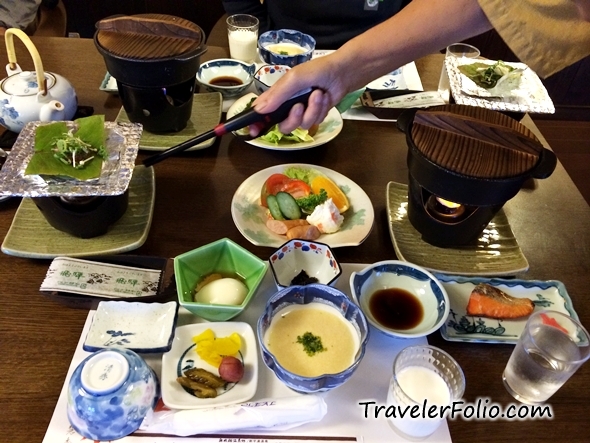
Address of Nakadaya: 944 Hitoegane, Okuhida Onsen Go, Okuhida Onsen, Takayama
(高山市奥飛騨温泉郷一重ヶ根944)
Web: http://nakadaya.jp
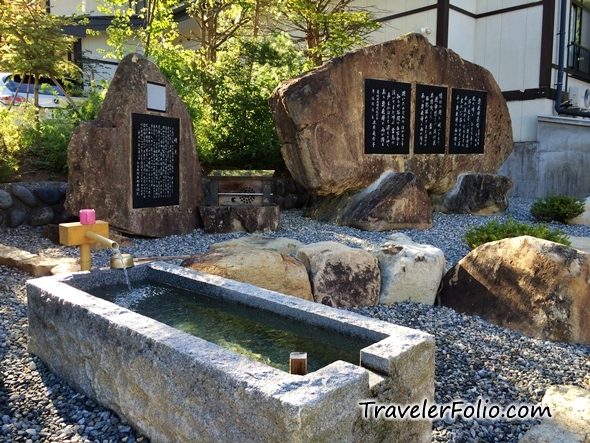
Nakadaya onsen ryokan is located just 17-minute bus ride to Shinhotaka Ropeway, one of its kind in Japan. The double decker gondola cars ascend the slopes of the Hotake Mountain Range that includes Oku-Hotakedake, the third highest peak in the country. On day 3, we would be taking the Shinhotaka Ropeway and travelled to Shirakawa-go.
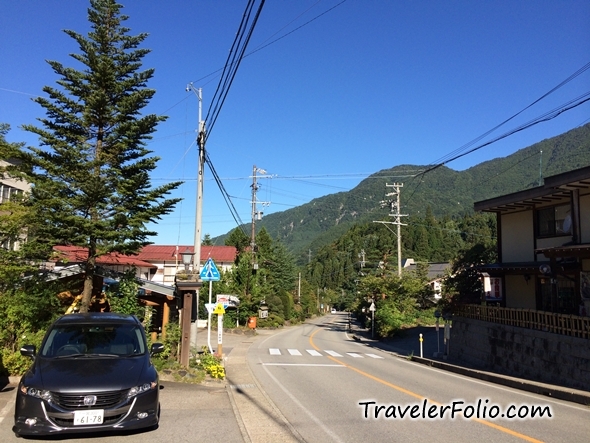
Come back here again for more updates on Gifu Free & Easy!
Special thanks to the Tourism Division Gifu Prefectural Government for the invitation to Gifu.

Hi Eunice, I really love your blog… and I actually followed your Gifu itinerary and I have no issue at all when I was there… thank you very much for the travel tips!
Hi Sofia. Great to know that! 🙂
Hello Eunice we were. Taken to the Gifu area by some Japanese friends in 1997 as well as many other places and stayed in ryokans in many areas love the people ,scenery,and especially their cuisine
Great! We had a very enjoyable trip in Gifu as well 🙂
Hi. Can hida fury kawasaki be explore by car as we will b driving together w a baby?